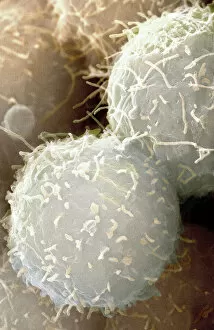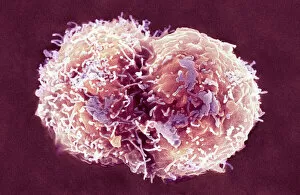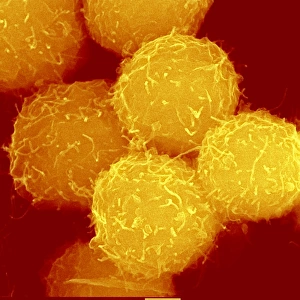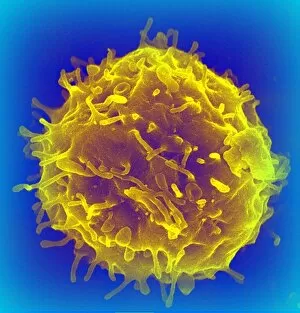Hemopoiesis Collection
Hemopoiesis, also known as hematopoiesis, is a fascinating process that takes place in our bodies to produce different types of blood cells
All Professionally Made to Order for Quick Shipping
Hemopoiesis, also known as hematopoiesis, is a fascinating process that takes place in our bodies to produce different types of blood cells. Stem cells play a crucial role in this intricate mechanism. In the world of science, scanning electron microscopy (SEM) has allowed us to delve deeper into understanding hemopoiesis. Through SEM images, we can observe the remarkable structure and characteristics of stem cells involved in this process. One such image showcases haematopoietic stem cells under SEM magnification C013/5009. The intricate details captured by SEM reveal the complexity and beauty of these vital cells responsible for generating various blood cell types. Another captivating artwork depicts haematopoietic stem cells, showcasing their unique shape and arrangement. This artistic representation highlights the importance and elegance of these specialized cells within our body's blood production system. Further SEM images provide an even closer look at individual haematopoietic stem cells under magnifications C013/5008, C013/5007, and C013/5006. These detailed visuals allow scientists to study their morphology and better understand their functions during hemopoiesis. Additionally, bone marrow stem cell SEM imagery provides insights into another type of stem cell involved in the production of new blood cells. These images showcase the distinct features that differentiate bone marrow stem cells from other types found within our bodies. The use of SEM technology continues to revolutionize our understanding by providing invaluable visual data on both haematopoietic and bone marrow stem cells. With each image captured through SEM lenses, researchers uncover more about how these incredible cellular entities contribute to maintaining a healthy bloodstream. Stem cell research remains at the forefront as scientists strive to unravel further mysteries surrounding hemopoiesis. As we continue exploring with SEM techniques, we gain valuable knowledge that may one day lead to breakthroughs in treating various blood disorders or developing novel therapies for patients in need.









